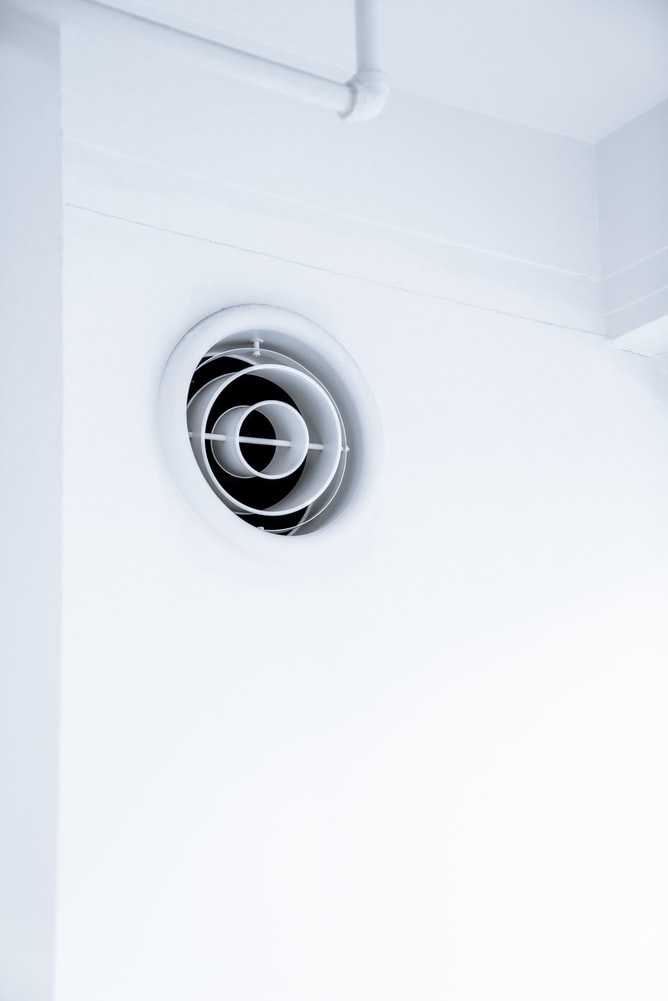A properly functioning furnace makes zero noise. You might even forget it’s there, working in the background to maintain an optimal temperature in your house.
Image source: Ryan R., CC BY-SA 4.0,
So, what could be wrong when you hear your furnace blower motor squealing? Well, that high-pitched squealing sound from your central air conditioning system might be because of the following reasons:
- Wearing out of the blower motor’s bearings
- Misaligned blower motor pieces, causing friction between blower housing and the blower motor wheel
- Insufficient lubrication
- Loose fan belt for fan-driven systems
So, how do you solve or remedy the squealing sound? Let’s take a deeper look.
How to Fix Furnace Blower Motor Squealing
The first and best thing to do once you hear the noise is to contact an expert to ensure a proper diagnosis. Based on the diagnosis, the expert will advise you on the best solution for your problem. However, here are the most viable solutions to your furnace’s squealing noises.
- Wearing Out of Blower Motor Bearings
Worn-out blower motor bearings are a major cause of the furnace blower squealing. This happens as the bearings wear out from the continuous friction of the blower motor during operation.
If this is the case with your furnace, the solution would be to replace the bearings. If you smell something odd, hear the squealing noise, or feel a change in the air movement, it’s wise to call for an HVAC technician.
A thorough inspection will determine what is causing these issues.
How to Change Worn-Out Motor Bearings
If you have some knowledge in this field, you can easily fix these bearings yourself. However, if you don’t, seeking the services of an HVAC system professional is always recommended. This is because replacing the motor bearings requires you to disassemble the blower motor.
- Insufficient Lubrication
Sometimes, the bearings are in good shape, but the system is not sufficiently lubricated.
Generally, the blower motor works by pushing warm air from your furnace into your home’s air ducts for distribution. For this reason, the blower motor ought to be adequately lubricated all the time. Also, it should be lubricated using the recommended lubricant to ensure proper function and enhanced performance.
Although this can be a DIY project, an expert’s opinion is always desirable to ensure everything is checked. The project requires you to carefully remove and oil the blower motor, thus reducing the noise.
- Loose Blower Belt (Fan Belt)
For the belt-driven furnace motors, the same squealing sound might arise if the belt is loose. This means that you’ll need to adjust the blower belt to reduce the noise and ensure smooth operation.
Also, after years of blowing warm air into your house, the blower belt might get damaged. This might require you to replace the belt entirely to guarantee the continued performance of your furnace.
Caution: While it’s possible to change the belt yourself and reduce the furnace fan squealing, it’s not advisable to do so. If you suspect that the squealing results from a damaged fan belt, you should always seek the help of an expert to examine your system’s lower belt. The technician will also make the necessary adjustments, repairs, or even replacements.
How to Tighten a Loose Blower Belt
Before you start tightening the fan belt, you need to inspect and determine that it’s the cause of the squealing.
Here are the steps you should follow:
- Switch off your system’s power by turning off the power switch. Also, turn off the breaker switch in the electric panel.
- Remove the furnace blower compartment cover by unscrewing the 4 to 6 screws, then lifting and pulling it out.
- Locate the blower motor belt.
- Examine the fan belt for any signs of deterioration, aging, or fraying.
- If the belt is in bad shape, contact an HVAC technician to replace it. If it’s just loose, you can go ahead and tighten it yourself.
- Exert pressure at the middle of the belt to determine whether it’s loose. If the deflection is more than ¾ inches, then it needs to be tightened.
- Use the two screws at the base or the side of your furnace blower motor. Turn them counterclockwise to loosen. This allows you to move the motor in the direction you want.
- Once the nuts/screws are loose, push the motor to form a taut belt. With a taut belt, it’s possible to tighten the screws until the motor can’t move anymore.
- Again, press the middle of the fan belt to check its tension. If the deflection is between ½ and ¾ inches, then it’s good to go. If not, repeat the process until you achieve the right tension.
- Replace the cover.
- Turn your system’s power back on.
Furnace Maintenance
The best way to ensure that your central air system continues to operate optimally is through proper maintenance. Don’t neglect to check the system regularly to ensure that everything is in good shape.
Having a qualified HVAC technician inspect and conduct maintenance on your air heating system will go a long way in guaranteeing optimal temperatures in your house.
Other Common Furnace Noises
Besides the furnace blower squeaking, you might also hear some of these noises from your furnace.
Clicking Noise
Clicking noise from your furnace may result from two major issues.
- The continuous flipping (on and off) of the furnace control board switches: The switches are pretty powerful, which makes them produce the “clicking” sound with each air condition cycle.
- When the blower or inducer motor tilts or drops and touches other parts of the furnace that it shouldn’t: If it continually touches or hits that part as it runs, this might produce the “clicking sound.”
Contact an HVAC specialist to inspect and restore the right alignment of the parts.
Rattling Sound
A rattling noise can result from the balancing weights on the blower motor wheels being thrown off. These weights are for maintaining balance on the blower motor to allow it to run properly and efficiently.
The rattling sound can also be caused by stray metal pieces or loose screws inside the housing cabinet. Therefore, ensure that a qualified technician inspects the system for you.
[related_posts_by_tax posts_per_page="3" format="thumbnails" image_size="medium"]









